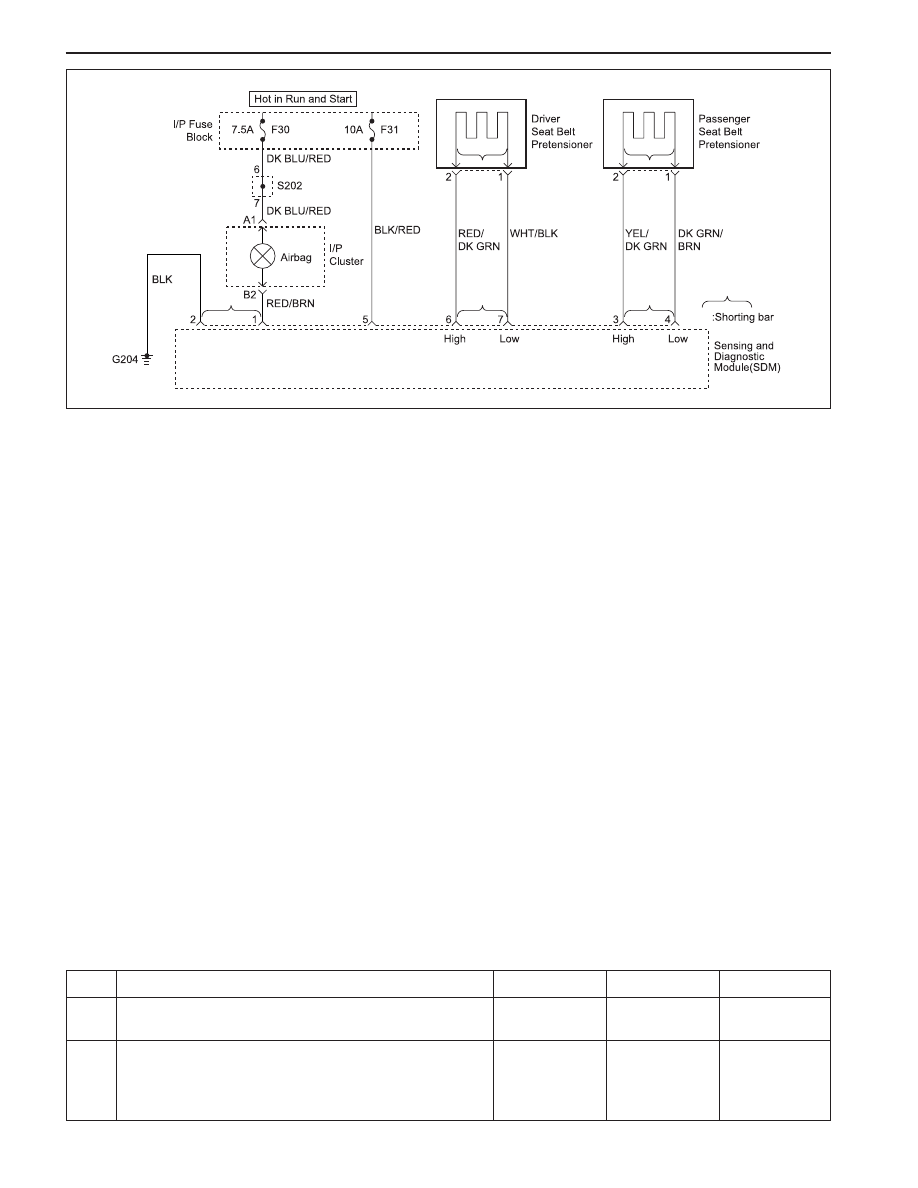SsangYong Korando II (1996-2006 year). Manual - part 410

SSANGYONG MY2002
8B-56 SUPPLEMENTAL RESTRAINTS SYSTEM
Circuit Description
When the ignition switch is first turned ON, ignition voltage
applied to the indicator lamp and also to the sensing
and diagnostic module (SDM) input terminal 5. The SDM
respond by illuminating the airbag indicator in instrument
cluster for 4.5 seconds. If the SDM cannot detect ignition
voltage at terminal 5, a DTC 47 will be set.
DTC 47 Will Set When
DTC 47 will set when during the continuos monitoring,
the SDM fails to detect normal operating voltage at
terminal 5, the input terminal for ignition voltage supply.
DIAGNOSTIC TROUBLE CODE (DTC) 47
BATTERY VOLTAGE IS OUT OF SPECIFICATION
Action Taken
The SDM will illuminates the airbag indicator, but the
indicator will not turn on if the inputs have not been
correctly processed.
DTC 47 Will Clear When
The ignition switch is turned OFF or the problem is
repaired.
KAA8B120
DTC 47 - Battery Voltage is Out of Specification
Caution: The sensing and diagnosis module (SDM)
can maintain sufficient voltage to deploy the airbags
and pretensioners for 0.15 seconds after the ignition
is OFF and the fuse has been removed. If the airbags
or pretensioners are not disconnected, do not begin
s e r v i c e u n t i l o n e m i n u t e h a s p a s s e d a f t e r
disconnecting power to the SDM. Otherwise, injury
could result.
Caution: During service procedure, be very careful
when handling the SDM. Never strike or jar the SDM.
Never power the supplemental restraints system
(SRS) when the SDM is not rigidly attached to the
vehicle. Also SDM mounting nuts must be carefully
tightened to ensure proper operation of the SRS.
The SDM could be activated if it is powered when it
is not rigidly attached to the vehicle, resulting in
unexpected deployment and possible injury.
Perform the SRS Diagnostic System Check.
Is the SRS Diagnostic System Check complete?
1. Repair or replace the faulty wires, terminals or
connectors.
2. Connect all the SRS components.
Is the repair complete?
Step
Action
Value(s)
Yes
No
1
-
Go to Step 3
Go to Step 4
3
-
Go to Step 2
-